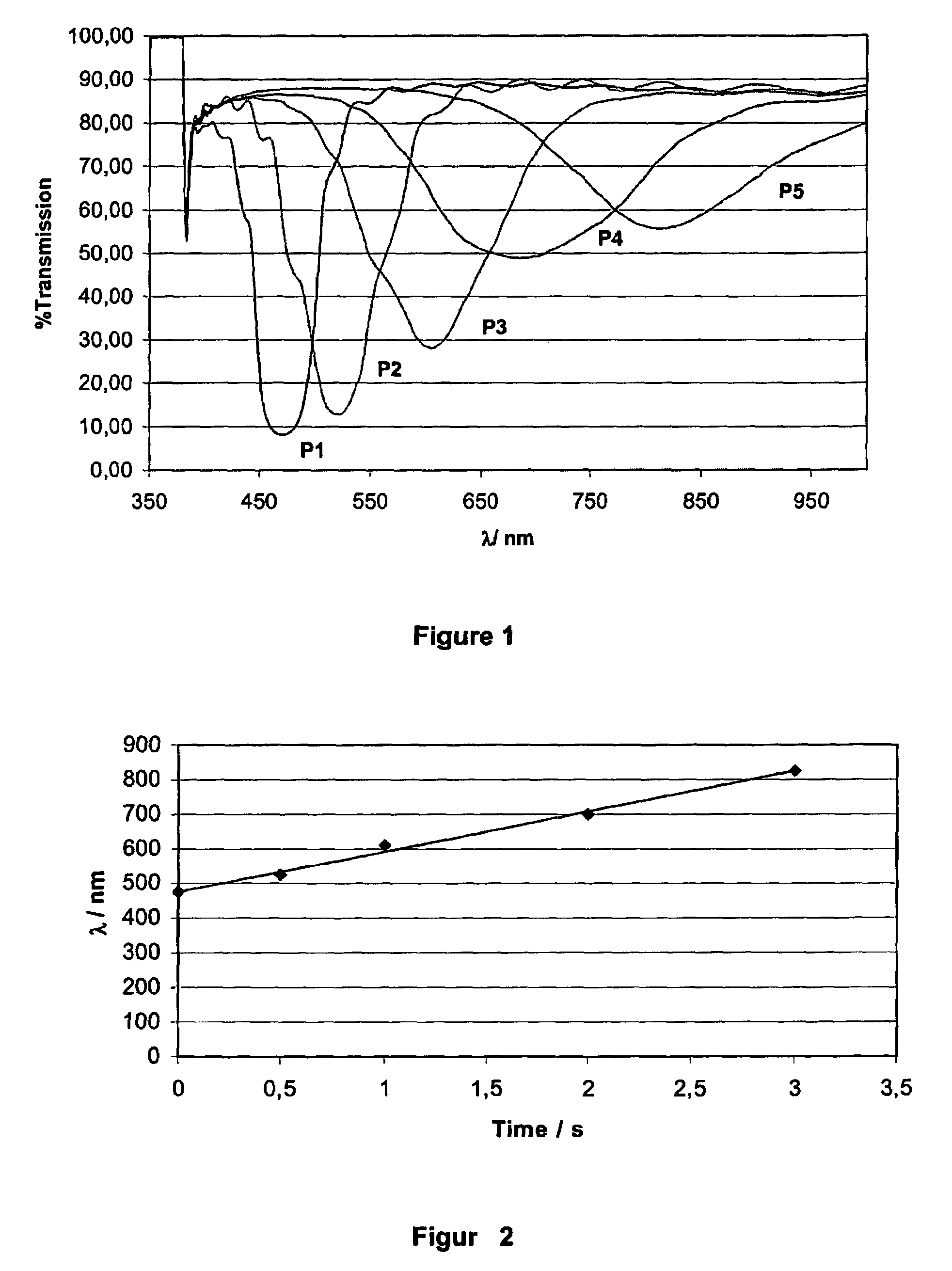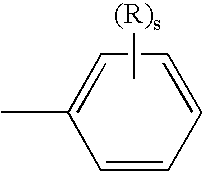Chiral photoisomerizable compounds
a technology of photoisomerizable compounds and compounds, applied in the field of chiral photoisomerizable compounds, can solve the problems of irreversible photocleavage process, isomerizable and tunable, and destruction of chiral compounds
- Summary
- Abstract
- Description
- Claims
- Application Information
AI Technical Summary
Benefits of technology
Problems solved by technology
Method used
Image
Examples
example 1
[0252]Compound (1) was prepared as described below
[0253]
4-(4-Pentyl-cyclohexyl)-benzoic acid 2-Hydroxy-1,2-diphenyl-ethyl ester (1a)
[0254]To a jacketed flask (1L) 4-(4-pentyl-cyclohexyl)-benzoic acid (6.31 g, 23 mmol), S,S-1,2-dipheny-ethane-1,2-diol (5.00 g, 23 mmol), 4-(dimethylamino)-pyridine (0.24 g, 2 mmol) and N,N′-dicyclohexylcarbodiimide (5.16 g, 25 mmol) were added, followed by the addition of dichloromethane (50 mL), and the mixture stirred at ambient temperature overnight. Solid material was then filtered, the organic layer washed with brine (2×25 mL), dried (MgSO4) and the solvent removed under vacuum. Column chromatography (on silica, CH2Cl2 as eluent) gave 4-(4-Pentyl-cyclohexyl)-benzoic acid 2-hydroxy-1,2-diphenyl-ethyl ester (1a) (6.20 g, 13 mmol, 57%), structure confirmed by 1H,13C, GC-MS and IR.
4-(4-Pentyl-cyclohexyl)-benzoic acid 2-{(E)-3-[4-(6-acryloyloxy-propyloxy)-phenyl]-allanoyloxy}-1,2-diphenyl-ethyl ester (1)
[0255]To a round bottomed flask ester (1a) (3.00 ...
example 2 – 9
Example 2–9
[0257]Compound (2) was prepared as described below
[0258]
4-(4-Pentyl-cyclohexyl)-benzoic acid 2-(4-Formyl-benzoic acid)-1.2-diphenyl-ethyl ester (2a)
[0259]To a round bottomed flask ester (1a) of example 1 (5.00 g, 11 mmol), 4-formyl-benzoic acid (1.65 g, 11 mmol)), 4-(dimethylamino)-pyridine (0.12 g, 1 mmol) and N,N′-dicyclohexylcarbodiimide (2.27 g, 11 mmol) were added, followed by the addition of dichloromethane (50 mL), and the mixture stirred overnight at 35° C. The reaction mixture was then filtered, washed with water (2×25 mL), dried (MgSO4) and the solvent removed under vacuum. Column chromatography (on silica, CH2Cl2 as eluent) gave 4-(4-Pentyl-cyclohexyl)-benzoic acid 2-(4-formyl-benzoic acid)-1,2-diphenyl-ethyl ester (2a) (2.09, 3 mmol, 43%), structure confirmed by 1H, 13C, GC-MS and IR.
4-(4-Pentyl-cyclohexyl)-benzoic acid 2-(4-[(E)-2-(4-Butoxy-phenyl)-vinyl]-benzoic acid)-1,2-diphenyl-ethyl ester (2)
[0260](4-n-Butoxybenzyl)triphenylphosphonium bromide (3.54 g, 7...
example 10
n of a Polymer Film
[0265]The polymerizable mixture M was formulated, comprising[0266]Compound A 51.70%[0267]Compound B 12.95%[0268]Compound C 23.70%[0269]Compound D 9.30%[0270]FX 13 1.16%[0271]TPO 1.16%[0272]4-Methoxyphenol 0.03%
[0273]
[0274]Compounds (A), (B), (C) and (D) can be prepared according or in analogy to the methods described in D. J.Broer et al., Makromol. Chem. 190, 3201–3215 (1989). FX13® is a polymerizable nonionic surfactant with a perfluoroalkyl group which is commercially available from 3M Corp. TPO (2,4,6-trimethylbenzoyl-diphenylphosphine oxide, Trademark Lucirin® TPO) is a commercially available photoinitiator (from BASF AG).
[0275]Mixture M is dissolved in xylene to give solution S1 with a concentration of 50% of total solids. 0.0395 g of compound (1) of example 1 are added to 0.9566 g of solution S1 to give solution S2 with the concentration of (1) being 7.94% of total solids.
[0276]Thin films of the solution S2 are coated onto a substrate and isomerized in air f...
PUM
| Property | Measurement | Unit |
|---|---|---|
| wavelength | aaaaa | aaaaa |
| wavelength | aaaaa | aaaaa |
| wavelength | aaaaa | aaaaa |
Abstract
Description
Claims
Application Information
 Login to View More
Login to View More - R&D
- Intellectual Property
- Life Sciences
- Materials
- Tech Scout
- Unparalleled Data Quality
- Higher Quality Content
- 60% Fewer Hallucinations
Browse by: Latest US Patents, China's latest patents, Technical Efficacy Thesaurus, Application Domain, Technology Topic, Popular Technical Reports.
© 2025 PatSnap. All rights reserved.Legal|Privacy policy|Modern Slavery Act Transparency Statement|Sitemap|About US| Contact US: help@patsnap.com



